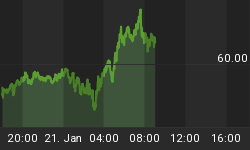"...If Washington and the US consumer can't borrow cheap at the long end, then they'll just go to the short end for cheap money instead..."
WHAT'S A CENTRAL BANKER to do?
Despite slashing the cost of short-term loans since last summer, the Federal Reserve has yet to dent the cost of longer-term finance.
Which is a real problem for the Treasury and Congress alike.
To date, fully 3.25% of Fed cuts have knocked only 1.5% points off 10-year US bond yields; thirty-year bond yields are barely 0.6% lower.
So while Ben Bernanke's big fix for the housing market has failed to squash longer-term mortgage rates, it's also failed to reduce interest rates for the government, too. It also represents an ugly return of the Greenspan Conundrum.
"The broadly unanticipated behavior of world bond markets remains a conundrum," admitted the Maestro to the House of Representatives in official testimony in early 2005.
But lucky for him, the bond market then was keeping rates cheap. Indeed, the yield on 10-year and longer-dated US Treasury bonds stayed near their multi-decade lows - first reached when Greenspan slashed the Fed funds rate to just 1% in the summer of 2003 - as he began "normalizing" short-term Fed rates from that record bottom.
No one on Capitol Hill complained, therefore. Longer-term finance then cost less than shorter-term loans. And with US Treasury debt heading for $9 trillion and more, what politician didn't want easier terms from the bond market?
Whereas today, in sharp contrast, it's longer-term debt that's become more expensive.
Once again, the Fed can't move long-dated yields; but now the cost of paying for Washington's spending stands well above overnight loans. And the size of Washington's spending only keeps growing. Won't the bond market play ball?
Pretty please?
"Over the last several months, changes in economic conditions, financial markets and monetary and fiscal policy have impacted Treasury's marketable borrowing needs," notes Anthony Ryan, assistant secretary for financial markets at the US Treasury.
"Financial market strains have impacted the real economy and the nation has experienced lower economic growth, lower receipts and increased outlays."
What to do? Thirty-year US bonds now yield fully 3% more than short-term Treasuries. Last time this premium for long-term borrowing got so high, the US government decided to stop issuing 30-year bonds altogether. It only re-introduced them in late 2006, taking advantage of Greenspan's Conundrum to lock in 30-year loans at below-short-term rates.
Put another way, "Just what will the Fed do if 10-year Treasury yields keep rising?" as we asked here at BullionVault at the start of June 2007.
"Well if Washington and the US consumer can't borrow cheap at the long end," we guessed in Gold & the Bond Market Panic, "then they'll just have to go to the short end for cheap money instead. The Fed can take care of that.
"By slashing the price of overnight money, it will let the US government shift the weight of its obligations out of 10-year and long-dated bonds into shorter-term debt - the classic structure of borrowing for any banana republic."
And now - surprise, surprise! - the US Treasury says it's bringing back one-year T-bills, last seen at the end of 2001. "The administration said [Wednesday] it would begin selling the one-year bill, also referred to as a 52-week bill, at an initial auction in June," reports the Associated Press.
"New one-year securities will be auctioned every four weeks [because] the government will need to cover a budget deficit expected to jump to an all-time high this year, surpassing the old mark of $413 billion set in 2004. A big part of the increased borrowing reflects the need to pay for economic-stimulus rebates to 130 million households."
Does it matter? "Countries don't go broke," as Walter Wriston, then chairman of Citigroup, said just before Mexico, Brazil and Argentina went broke during the Less-Developed Countries Crisis of 1982. And "governments with large exposures to currency mismatches and interest rate or maturity risks are, of course, particularly vulnerable," as Arturo Porzecanski, a scholar at New York and Columbia universities, writes in Sovereign Debt at the Crossroads (OUP, 2006).
"Governments tend to default specifically when they must increase spending quickly (for instance, to prosecute a war), experience a sudden shortfall in revenues (because of a severe economic contraction), or face an abrupt curtailment of access to bond and loan financing (e.g., because of political instability).
"It is usually very difficult for governments in such trouble to take the necessary offsetting actions, such as hiking tax collections or cutting spending on an emergency basis."
None of this points to a looming debt-default by the US Treasury, of course. But jitters in confidence can destroy front-loaded debtors if (or when) lenders go on strike. Witness last summer's collapse of Northern Rock - a top five British mortgage lender - precisely because it relied on short-term refinancing to keep itself running. Witness the classic "banana republic" structure of short-term debt that needs constant re-funding.
There's a clear "maturity risk" built into America moving its government debt out of long-dated bonds into ever-closer redemption dates. Not least if the Federal Reserve keeps squashing its short-term interest rates - now way below the rate of inflation - literally destroying the wealth of investors caught holding short-dated bonds.
If the bond market won't play ball at the long end, will it always play ball for short-term refinancing regardless?















